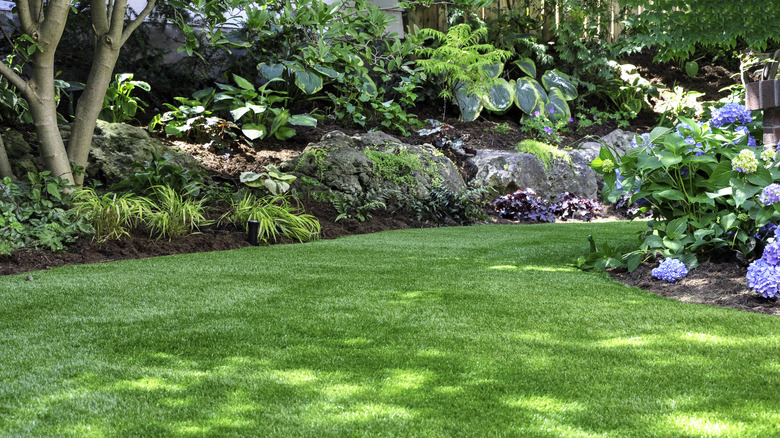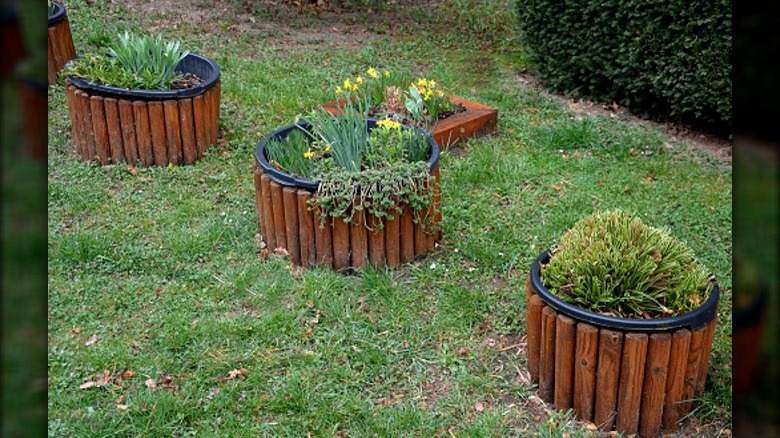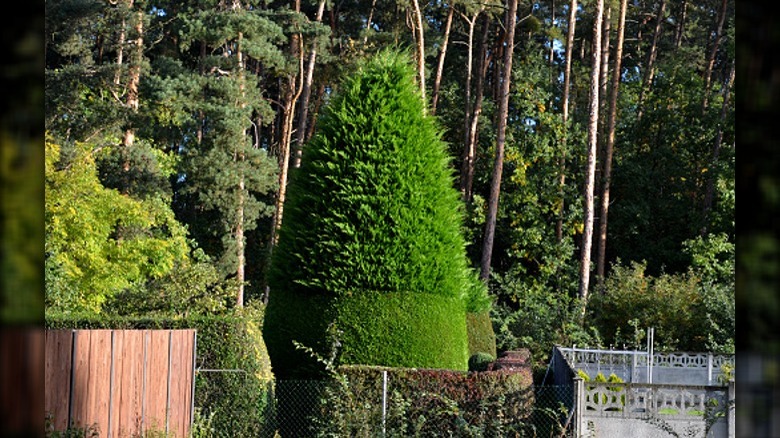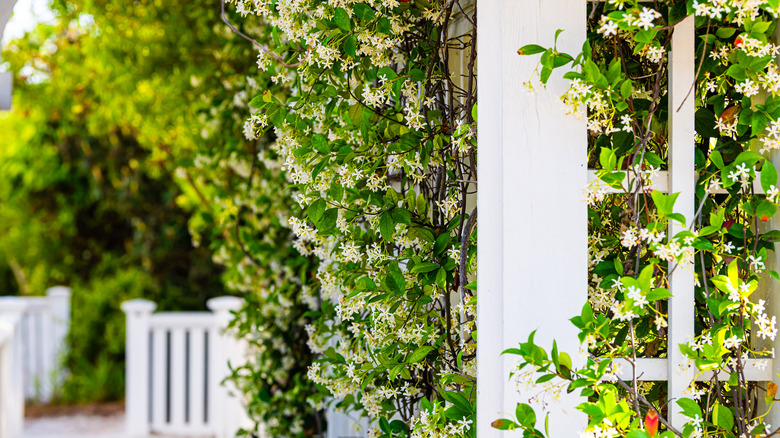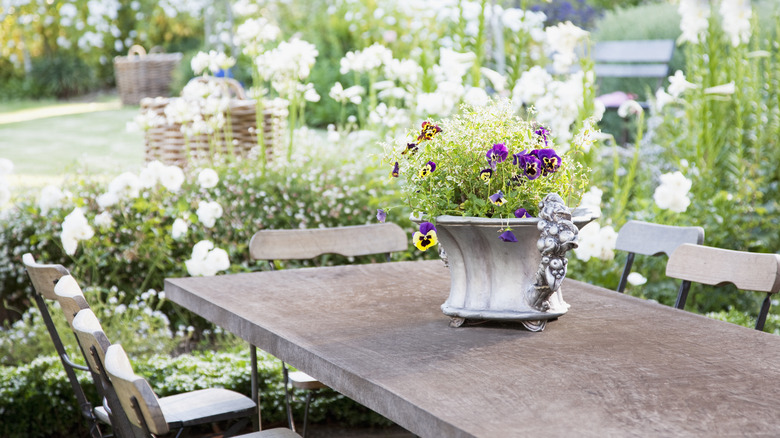What It Means To 'Punctuate' Your Garden And Why You Should Try It
We use punctuation when writing to help establish a point we want to make. Sometimes that expression is exhilarating! Other times, we use punctuation as a side note – not everything needs its own sentence – to complete our thought. Using "punctuation" pieces in your garden is similar. While foundation plants establish a space, a few well-placed trees or bushes help give your garden the final details it needs to be complete.
To determine if your yard needs some punctuation, take a look around. Are most of the taller, more interesting trees and bushes planted only around the perimeter of your yard or garden, leaving the center unadorned? If so, your space may look more like one long run-on sentence than a pleasant paragraph. The enjoyable part of punctuating your garden is thinking about the statement you want to make and choosing the right plants to create a completely stunning garden paragraph you cannot help but reread.
A continuation
To give your garden a sense that the story of your space is not yet complete, look for plantings or structures that imitate ellipses. In informal writing, this form of punctuation creates suspense or a pause that makes the reader wonder what will come next. In the garden, your physical ellipses can help you enjoy the wonder of your space while inviting a sense of curiosity and interest in your guests.
There are many ways to mimic ellipses in your garden. Consider a series of large, round bushes in the center of a garden bed that follows the natural flow of your space, or dramatic planters that lead somewhere interesting. If you don't mind the maintenance, boxwood bushes can be perfectly shaped into circles. When you are wandering around the yard or entertaining, in what direction do people tend to congregate? Do you have a focal point, like a pool or water feature? Since an ellipsis is meant to create a pause before something interesting, use this variety of planting to direct people to the pièce de résistance.
Some excitement
What's a garden without a bit of pizzazz? Exclamation points help add excitement to our writing, but like in prose, they can certainly be overused. Too many exclamation-type plants in your garden would be overwhelming. Fans of Seinfeld might remember an exchange between Elaine and another character, Jake, regarding a lack of exclamation points in an important message. Elaine would "put an exclamation point at the end of all these sentences! On this one! And on that one!" On the other hand, Jake had just one exclamation to make ... "I'm leaving!"
We think you should split the difference between Elaine and Jake and use a couple of "exclamation plants" for interest. Like the shape of an exclamation point, look for tall and pointy plants to add that punch of drama to your garden. Depending on your hardiness zone, many column-shaped trees would work well, like the columnar plum yew (Cephalotaxus harringtonia 'Fastigiata'), which grows to a maximum height of 10 feet. If you do not want to commit to a tree, another option is feather reed grass (Calamagrostis x acutiflora 'Karl Foerster'). Finally, for the ultimate punctuation effect, place your exclamation plantings at the entrance or exit of your garden.
On a side note
In the world of garden punctuation, a small space off to the side of your yard is like a parenthesis. When you read, you know this type of punctuation gives you useful information as an aside. You will not find the direct point within these brackets, but it still includes helpful content. In your garden, parenthesis can help establish a special spot: a vegetable garden, wildflower space, or your own private getaway. Your parenthetical space should not be in the center of your yard or garden. It is not on the way to or from anywhere specific, but is instead a side note in your garden that supports the story of your space without being the focus. This is the perfect spot for hammock naps or reading your favorite book with a cup of tea — an escape from the world.
You can use plants, structures, or both to create your parenthesis. The rounded shape of this type of punctuation is visually pleasing while giving a natural flow to the space. Brick walls, rounded trellises, or even vine-covered fencing provide the privacy needed to make this area special. Perennial favorites like clematis or passion flowers climb trellises beautifully while adding the softness of greenery and stunning blooms.
The finishing touch
At the end of this article, it is only appropriate that we discuss the ultimate termination of a sentence: the period. This punctuation is the full stop — the end. In the garden, it could be considered the focal point. Remember when we discussed using ellipses to create suspense for what is ahead? This is that thing. As you think about incorporating the concept of the period in your garden, think less about shape and more about purpose.
You may already have this punctuation in your space. If you have a pool or outdoor dining area, you can simply upgrade these spaces. The idea here is that the period is the final destination. When you head outside, where are you usually going? It doesn't even have to be fancy. If you enjoy yard work or spend a lot of time in your detached shop building, that could be your "period." This space is yours, so think creatively about how to make these destinations — your final stop — even more special.
